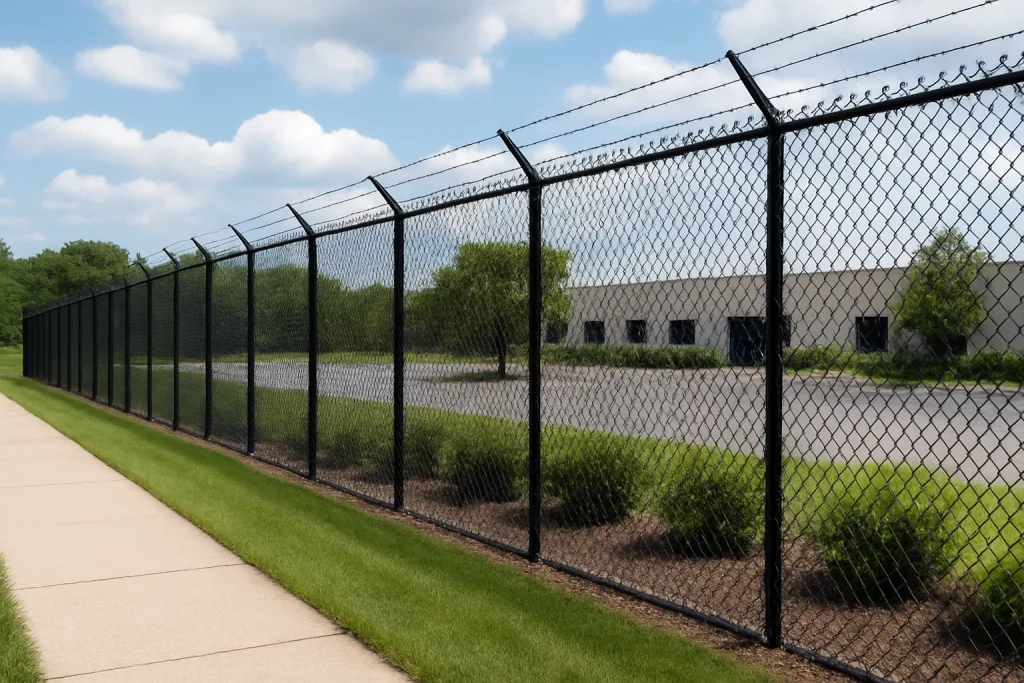Understanding Perimeter Security Basics is essential for any business or facility looking to safeguard its property, staff, and operations. A strong perimeter system prevents unauthorized access, protects valuable assets, and deters potential threats. By combining fencing, surveillance, and professional planning, companies can achieve a secure, efficient, and compliant environment.
What Defines Perimeter Security
Perimeter security refers to the combination of barriers, technology, and management practices designed to protect the outer boundaries of a property. It integrates physical elements such as fencing and lighting with procedural measures like monitoring and controlled entry.
The objective is to create multiple layers of defense that discourage intrusion while allowing authorized movement within the premises.
The Role of Fencing in Perimeter Protection
Fencing remains the foundation of any perimeter system. The right fence type provides structure, durability, and a visible deterrent. Businesses typically rely on three primary solutions that balance performance and appearance:
Steel fences: Strong, long-lasting, and ideal for industrial and high-security environments.
Chain link fences: A cost-effective, practical option that provides visibility and boundary control without obstructing sightlines.
Vinyl fences: Combines privacy with low maintenance and modern aesthetics.
Each of these fence types can be customized with gates, coatings, or security accessories depending on the property’s specific requirements.
Integrating Technology and Monitoring
Modern perimeter security goes beyond physical structures. Adding surveillance and access control systems enhances detection and response:
CCTV cameras and motion sensors continuously monitor key zones.
Electronic access gates restrict unauthorized entry.
Lighting systems deter nighttime trespassing.
When integrated with strong fencing, these technologies form a reliable and layered protection strategy.
Adapting Design to Business Needs
Every property has distinct perimeter requirements depending on its size, location, and function:
Industrial sites focus on durability and control.
Commercial facilities seek cost-efficiency and flexibility.
Corporate offices or customer-facing spaces prefer a modern, low-maintenance appearance.
Working with qualified professionals ensures that these solutions align with city codes and local safety regulations.
Professional Planning and Compliance
Perimeter design involves more than choosing materials. Proper layout, fence height, gate placement, and access control are critical for effectiveness. Partnering with experienced Commercial fences Chicago providers helps businesses ensure compliance with local laws and maintain consistency across all property lines.
These specialists understand zoning standards, boundary marking, and best installation practices that guarantee long-term reliability.
Maintenance and Lifespan
Even the most secure fences require regular maintenance to stay effective. Periodic inspections prevent deterioration and maintain performance.
Recommended practices include:
Cleaning and repainting metal surfaces to prevent corrosion.
Checking tension and repairing any loose or damaged sections.
Washing and maintaining finishes to preserve appearance and integrity.
Routine upkeep extends lifespan, ensures compliance, and reduces long-term replacement costs.
Complementing Security with Visual Appeal
Perimeter security should integrate with a property’s overall design. Combining durable fencing with landscaping, lighting, and signage not only strengthens protection but also enhances curb appeal.
Businesses today view their perimeter as part of their brand—professional, organized, and trustworthy. Selecting materials and layouts that align with architectural style sends a message of quality and attention to detail.
External Resource for Reference
For reliable information on facility protection and perimeter security planning, refer to the U.S. Department of Homeland Security (CISA) guidelines.
This government resource provides technical guidance on creating secure, compliant, and resilient perimeter systems for commercial properties.
Conclusion
A secure perimeter is the first and most visible layer of defense for any business. Understanding its key components—from fencing and surveillance to maintenance and compliance—ensures safety and operational stability.
By integrating a well-designed perimeter strategy with expert installation and adherence to official guidelines, companies can achieve reliable protection without sacrificing visual appeal. Effective perimeter security safeguards not only property but also reputation and peace of mind.

